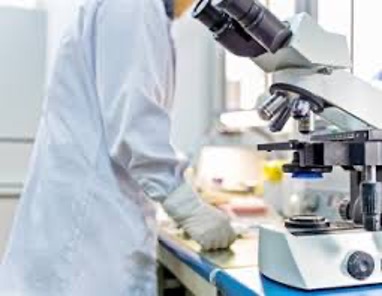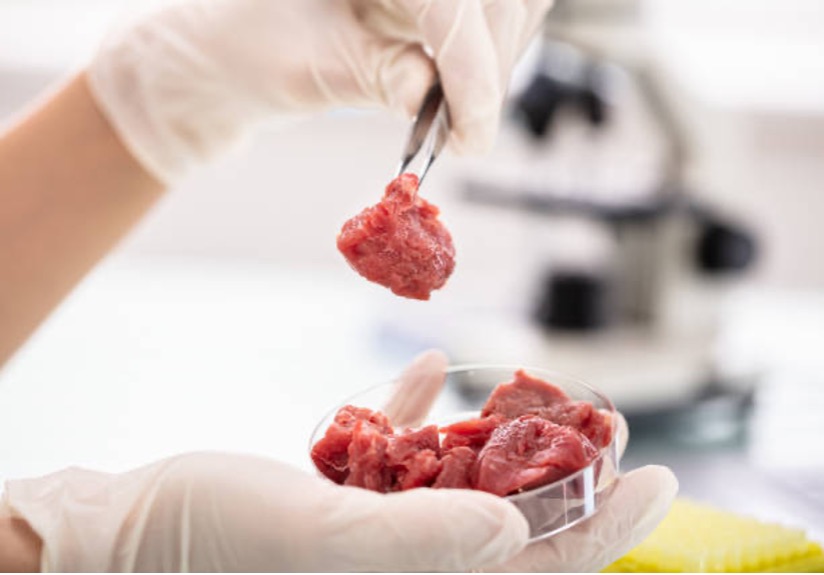In the dynamic landscape of modern agriculture, the fusion of science and sustenance has given rise to an absolute unreal phenomenon, the advancements of lab technologies in food production. As the world suffers with the challenge of feeding an ever-expanding population amidst environmental concerns and resource constraints, the emergence of lab-grown food stands as an unimaginable concept to human ingenuity and our continuous pursuit of innovative solutions. These scientific breakthroughs have propelled the domain of lab-grown food and raised discussions on sustainable and efficient food production. From precision in cellular agriculture to the cultivation of nutrient-rich alternatives, the convergence of biology and technology is reshaping our understanding of what sits on our plates and holds the promise of a more sustainable and resilient food future. In the 21st century, the global population continues to increase, putting immense pressure on traditional agriculture to meet the rising demand for food. Amidst environmental concerns, resource constraints and a changing climate, scientists have turned to cutting-edge technologies to address these challenges. One such innovation that holds promise for revolutionising our approach to food production is lab-grown or cultured food.
Lab grown food, also known as cultured food, is produced in a laboratory setting using a small number of biological cells. The concept of lab grown food is quite prevalent in the meat industry with vegans, seeing this as an alternative of substituting raw meat and preventing the killing of animals for rearing their flesh. Unlike traditional meat production, this method does not involve slaughtering animals (Contributors, 2023). The primary aim is to create a more environmentally friendly and humane meat industry, with cellular agriculture being considered as the potential future (Contributors, 2023). As of the end of 2019, 55 companies globally were actively engaged in developing this technology. The process involves extracting stem cells,
fundamental building blocks, from an animal and bathe the cells in a liquid containing nutrients to help them duplicate and put them into a bioreactor, a laboratory device for growing organisms (Contributors, 2023). In the beginning it seems like “unstructured” meat forms however efforts are made to transform it into realistic meat products, such as burgers and nuggets. Various companies are exploring methods, including the use of scaffolding made from soy protein, gelatine or other sources, to shape the lab-grown meat (Contributors, 2023).
However, the future success of cultured meat remains uncertain, with questions being raised about its health benefits, cost-effectiveness and consumer acceptance. The widespread availability of cultured meat in stores or restaurants may take months or even years to materialise.

Before diving into the contemporary landscape of lab-grown food, it is essential to trace its historical roots. The idea of cultivating food outside traditional farming methods dates back to the mid-20th century. Early experiments with tissue culture and cell cultivation laid the foundation for the development of today’s lab-grown food technologies. As we examine the evolution of these techniques, it becomes clear that they have gradually progressed from being speculative concepts to tangible solutions for addressing food security. With a more immersive technological advancement surrounding, the evolution in biological methods has played a vital role in distinguishing the development of lab-grown food and making it a reality in the current global scenario. This concept has reached a potential of replacing the current meat industry to some standards with people considering it as the “guilt free meat” which is friendly to the environment and correct in the ethical and moral eyes of the society as it involves no killing of a living being to be consumed by humans.
Environmental Impact of Lab-Grown Food
One of the primary arguments in favour of lab-grown food revolves around its potential to alleviate the environmental strain imposed by conventional agriculture. Traditional farming contributes significantly to deforestation, habitat destruction and greenhouse gas emissions. Lab-grown food offers a more sustainable alternative by requiring less land, water and energy. Analysing the life cycle assessments of both methods provides insights into the ecological footprint of lab-grown food, shedding light on its potential to mitigate environmental degradation. At the heart of lab-grown food lies cellular agriculture, a multidisciplinary field that integrates biology, chemistry and engineering. Cultured meat, one prominent face of lab-grown food, involves the cultivation of animal cells in controlled environments. The process typically includes isolating muscle cells, providing them with a nutrient-rich medium and encouraging their growth into edible tissues. Similarly, lab-grown plant-based alternatives replicate the cellular structure of conventional crops without the need for traditional farming practices.
The effectiveness of lab-grown food extends beyond environmental considerations to the crucial issue of global food security. With the world population projected to reach 9 billion by 2050, conventional agriculture faces various challenges in meeting the globally growing food
demand. Lab-grown food presents an opportunity to produce nutritionally rich sustenance more efficiently, potentially bridging the gap between supply and demand. However, the scalability and economic viability of these technologies are critical factors that require in-depth examination.

Ethical and Economical Considerations
While lab-grown food promises to revolutionise the food industry, ethical concerns surrounding its production cannot be ignored. The use of animal cells in cultured meat production prompts questions about animal welfare, genetic modification and the moral problems of manipulating life at a cellular level. Examining the ethical dimensions of lab-grown food demands an in-depth analysis of the trade-offs between environmental benefits and potential ethical drawbacks, shaping the conflict on its overall effectiveness. It’s necessary to consider the ethics involved with respecting the natural habitat and ecosystem of such a concept and necessary regulations need to be exercised in order to protect such biological methods being processed on a lower level which mainly involves the mindset of profit maximisation.
The successful integration of lab-grown food into our global food system relies on its economic viability and accessibility. At present, the production costs of lab-grown food remain relatively high, raising concerns about its affordability for the general population. An exploration of the economic dynamics, investment trends and ongoing research initiatives in the field is crucial to understanding the feasibility of lab-grown food as a mainstream dietary option. The success of lab-grown food ultimately rests on consumer acceptance. Understanding how individuals perceive and respond to these novel food products is vital for predicting market adoption. Social, cultural and psychological factors shape consumer attitudes toward lab-grown food and a detailed analysis of these influences can provide insights into the potential barriers and facilitators of widespread acceptance.

Advantages and Disadvantages of Lab-Grown Food
Lab-grown food has the potential to revolutionise resource usage in agriculture. It requires less land, water and energy compared to traditional farming. By reducing the need for extensive farmland and the environmental impact associated with large-scale agriculture, it can contribute to the conservation of natural resources. The controlled environment in which lab-grown food is produced allows for climate-independent cultivation. Unlike traditional crops susceptible to adverse weather conditions, lab-grown food can be produced consistently throughout the year, mitigating the risks associated with climate change and ensuring a stable food supply. It also has the potential to minimise environmental degradation linked to traditional farming practices. With no need for pesticides, herbicides or large-scale land clearance, the ecological footprint of food production could be significantly reduced, leading to improved biodiversity and soil conservation.
Despite significant progress, lab-grown food faces technological challenges. The scalability of production, cost-effectiveness and the development of efficient growth media are critical issues that need to be addressed for widespread adoption. Overcoming these hurdles requires ongoing research and investment in biotechnological advancements. Convincing consumers to embrace lab-grown food is a much bigger challenge. Overcoming confusion and addressing concerns about safety, nutritional value and taste are crucial for the acceptance of these kinds of food. Effective communication and transparency in the production process can play a pivotal role in shaping public perception. The ethical dimensions of lab-grown food involve questions about the treatment of living cells and the potential commodification of life. Striking a balance between ethical concerns and the potential benefits of this technology is essential to gather widespread support.
The widespread adoption of lab-grown food could reshape agricultural economies. While traditional farming communities might face challenges, the rise of a new industry centred around cellular agriculture could create jobs and drive economic growth. Transitioning to this new paradigm requires thoughtful planning and support for affected communities. Lab-grown food has the potential to address global food security challenges. By providing a reliable and efficient food source, especially in regions prone to climate-related disruptions, it could contribute to alleviating hunger and ensuring food access for vulnerable populations.
Conclusion
In conclusion, the effectiveness of lab-grown food is a diverse and constantly evolving topic that demands a comprehensive analysis and thorough research. From its historical origins to its scientific foundations, environmental impact, ethical considerations, economic viability and societal acceptance, every aspect of lab-grown food presents unique challenges and opportunities. As we move through the complexities of our global food system, exploring innovative solutions like lab-grown food becomes imperative for ensuring a sustainable and nourished future.
Lab-grown food can be considered as the new future of nutrition with more variations coming in play. However, the effectiveness can only be maintained through close monitoring and evaluation processes as it is necessary to find ways for mass producing such food items on a much economical scale in order to make it easily accessible by the more backward and low-income sections of the world.
Written by – Anmol Agarwal
Edited by – Mantasha Memon
